
Big Investments and AI Legislation
February 14, 2024
Exploring the Great Gun Debate: Opinions on Gun Control
February 21, 2024For the last couple of years, it has seemed like prices have been going up on everything. Inflation has been a key concern for many as the rising prices have started to hurt many families. With the recent news that some key inflation measures show that inflation is decreasing, we wanted to understand people’s level of concern about current and future inflation.
In our recent round of research-on-research, we asked respondents about their level of concern regarding inflation using a 10-point scale. We focused on the extremes by grouping results of the top three and bottom three boxes.
Overall, inflation is a significant concern with a majority of respondents. An overwhelming 67% of respondents indicate high levels of concern. This starkly contrasts the mere 7% who express minimal concern. This distribution of concern underscores the prominence of inflation in the minds of many, reflecting widespread worries about its impact on economic stability and personal finances.
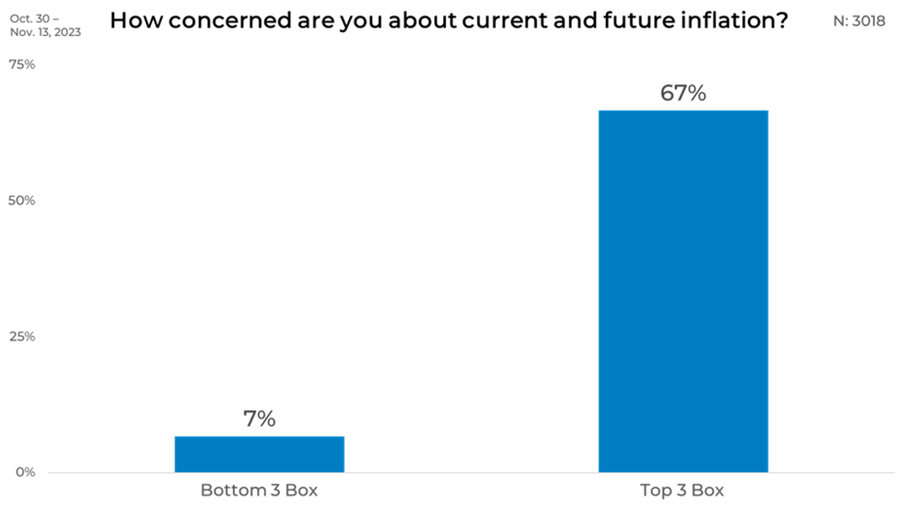
Age
Breaking down the data by age reveals a clear trend: concern increases with age. Among the youngest respondents, aged 18-24, 61% express high levels of concern. This concern appears to grow among middle-aged respondents, with 65% of those aged 35-44, 72% of those aged 45-64, and up to 77% of those 65 and older.
Conversely, the percentage of respondents expressing minimal concern decreases significantly with age. The youngest group, 18-24, reports the highest level of minimal concern at 10%, which gradually diminishes through the age groups, reaching the lowest at 2% among those 65 and over.
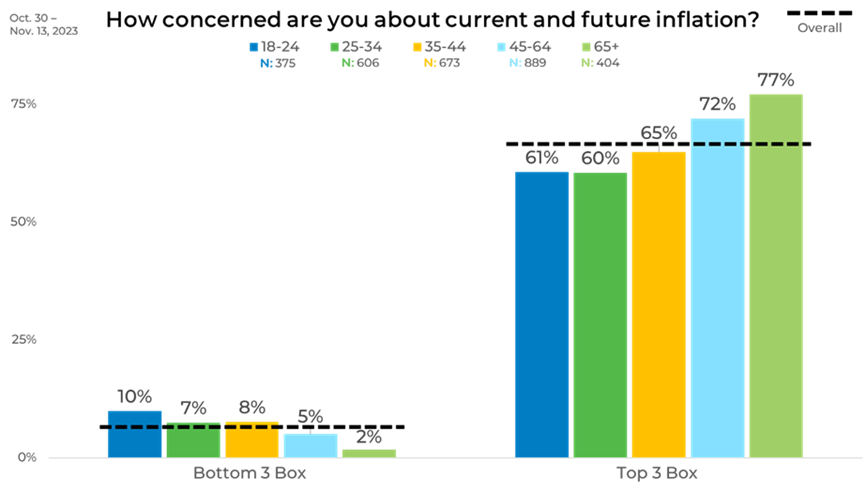
Income
Looking at the data by income level presents a surprising picture. Individuals earning under $20,000 annually show a lower level of top-tier concern than those in higher income brackets. This is surprising as those earning under $20,000 are disproportionally impacted by inflation. The high level of concern about inflation jumps to the overall average or above for all other income groups.
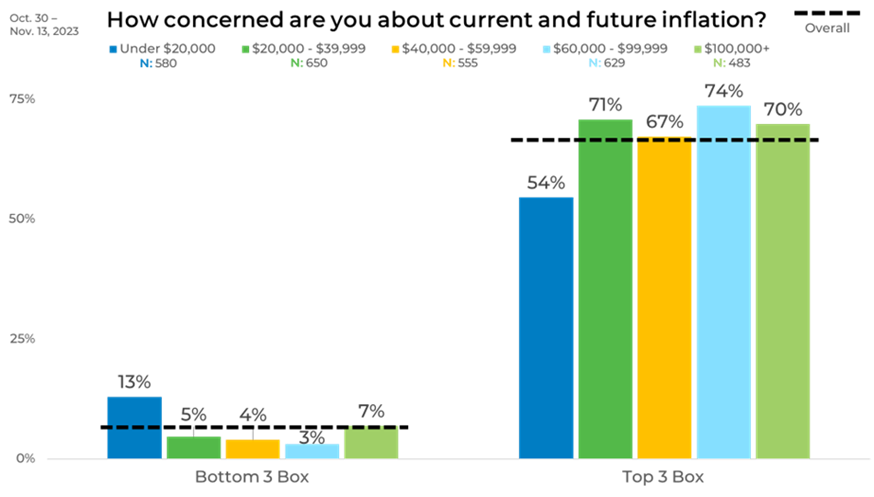
Political Affiliation
The breakdown of inflation concern by political affiliation highlights that while it is a concern across all political ideologies, there are definite leanings based on a respondent’s political beliefs. Republicans show the highest level of concern, with a significant 74%, while Democrats and Independents share a similar level of concern at 67%, right at the overall average.
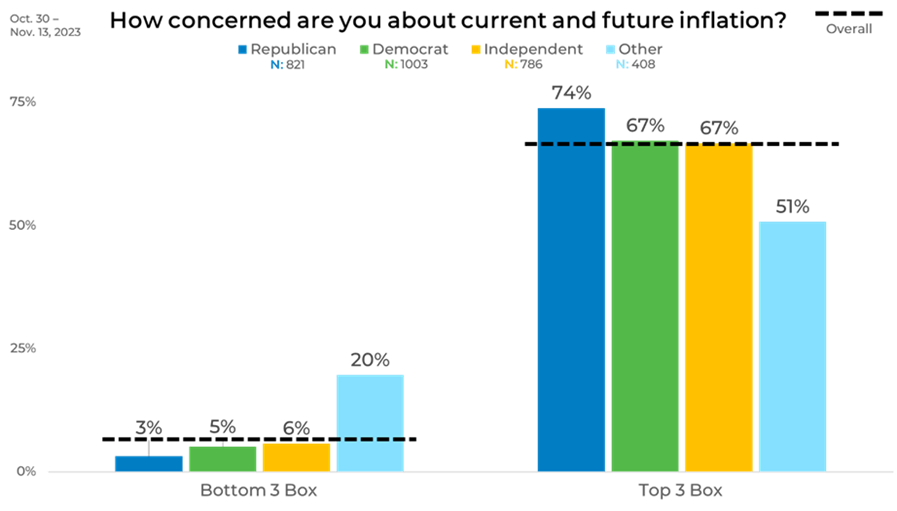
Ethnicity
Analyzing inflation concerns by ethnicity highlights how perceptions vary across racial and ethnic groups. 70% of Caucasians and Hispanics/Latinos both report a high level of concern about inflation, while Asians or South Asians express a slightly lower concern, at 64%.
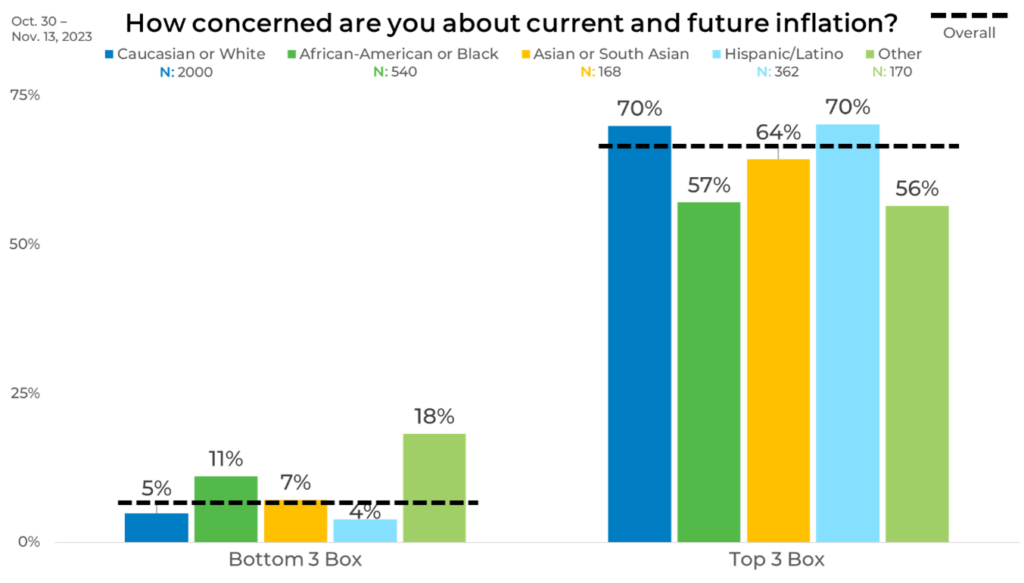
Panel
Finally, we looked at the results by panel. There was a notable difference between Panels D and E, where there was a 19-point difference in the percentage of respondents with a high concern regarding inflation.
Furthermore, the minimal concern regarding inflation also shows similar variability, with a 10-point difference between Panels C and E.
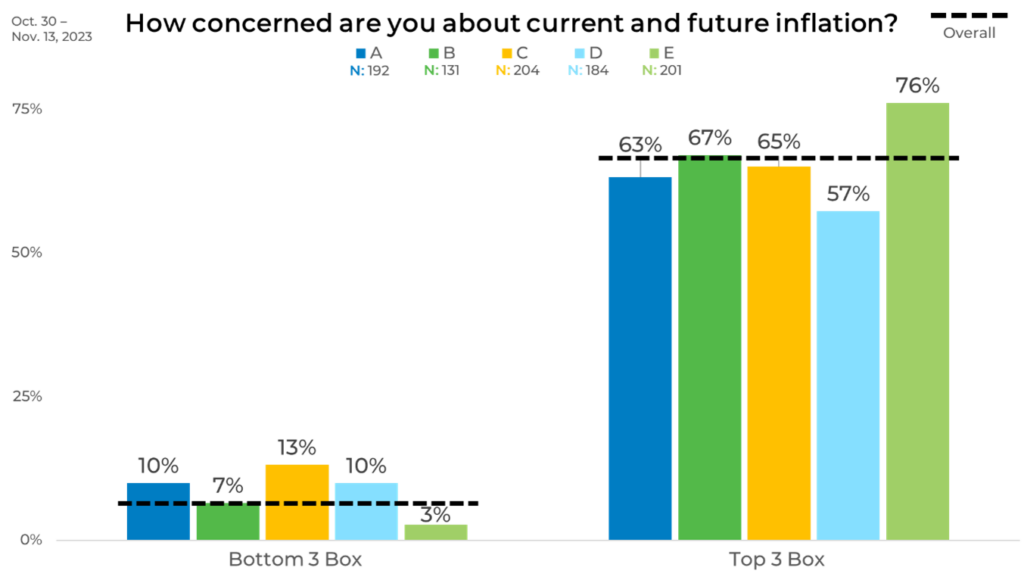
As you can see, awareness can vary significantly across demographics and by panel, impacting your data. That is why strategically blending sample is the best practice to ensure you are accounting for distributed demographic, as well as attitudinal and behavioral balance.
Learn more about our Strategic Sample Blending approach by clicking the button below.




